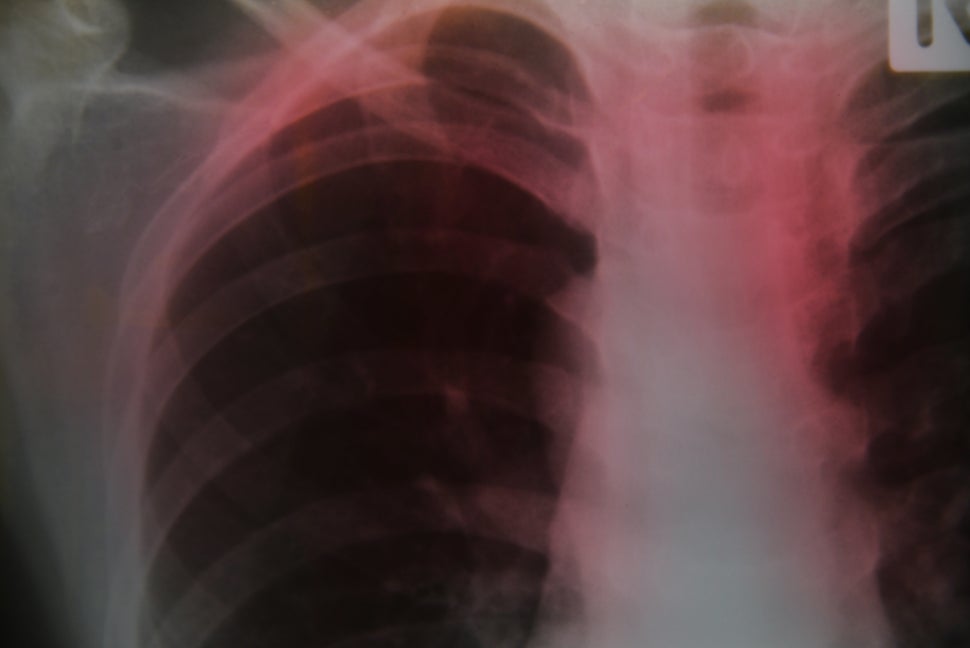

Nearly 1.8 million people lose their lives each year to tuberculosis (TB), making it the leading global infectious killer. That’s one death every three minutes - all of which could have been cured or avoided.
There are some shocking facts that include TB being one of the top ten causes of death worldwide. Considering that 1.7million people died in 2016 from what is a curable disease proves that more attention is needed to combat this worldwide epidemic.
In 2012, whilst living in Perth, Western Australia, I fell ill with pulmonary tuberculosis - not that I knew at the time. My diagnosis was a result of another condition, unfortunately known too well to many; for almost ten years, I have suffered from an eating disorder, anorexia nervosa. Along the way there have been varying levels of severity with the hardest years being my last year of high school and the two years following. By this point I had become a shell of a human being, vacant and completely in denial. It wasn’t until a second hospitalisation a month after my 18th birthday that I was faced with the reality of a life or death situation.
After assuming that I had come down with a really bad flu, I checked myself into the eating disorder ward ready to make a fresh start and help myself once and for all. Upon check-in, my symptoms started to worsen, and I was moved up into the respiratory ward. I was given an initial diagnosis of pneumonia, but it was clear that the doctors were not convinced as they continued to do tests. I spent the whole month and the next eight being pumped full of antibiotics through a little tube known as a PICC line (peripherally inserted central catheter), inserted through my left upper inner arm and threaded down next to my heart.
My symptoms had started to reduce after the first month - a result of one correct drug - and I was feeling slightly better. I convinced the doctors to let me go home as it was Easter, however one week later the night sweats started up again and a persistent cough emerged. I was told I would have to be readmitted but instead I was given home nursing and continued going to hospital for tests. This went on for four months when, one evening, while I was sitting in the same chair that I had spent day after day in, my Mum got a call from my specialist. She walked in the room, a little bit paler than usual.“You’ll never guess what you’ve got.”“What?” I said.“You’ve got tuberculosis.”
I immediately turned off, ironically, Moulin Rouge - making the connection to Nicole Kidman’s Satine and her imminent death from consumption, as it was then known - and to say I was shocked would be an understatement. Shamefully I didn’t know that tuberculosis still existed but evidently it did... because I now had it. Immediately I felt like I couldn’t touch anything or anyone. Not only did I feel like I was even more of a burden to my parents but now I had an infectious disease with centuries of stigma attached.
If you’re thinking tubercu–what, you’re sadly not alone. Tuberculosis, known by its shortened name, TB, and previously known as consumption, is an airborne infectious disease spread from person to person through the air. Statistics show that it most commonly affects people in more underdeveloped countries due to poor hygiene, sanitation, malnutrition, stigma and the lack of education surrounding the disease. However, with how easily the disease is spread, it most certainly exists in the more developed countries, unbeknownst to most of the general public.
Multidrug-resistant tuberculosis is a public health crisis and a major health security threat. The disease predominantly affects the lungs, though it can affect other areas of the body such as the bones. As I said before, I had pulmonary TB, and due to the delay in diagnosis I needed 18 months of treatment and have been left with heavy, irreparable damage on my right lung’s upper lobe.
Luckily for me at the time I didn’t have any of the major side effects from the medication. For the four years after I was cleared, the occasional wheezing and shortness of breath became normal but I suffered no other major repercussions. It wasn’t until some weeks before I moved to London this March that I woke up in the middle of the night with a haemoptysis (coughing up blood) caused by the severe scarring. After a bronchoscopyto check out the situation, I was told that I now have a chronic lung condition called bronchiectasis. This condition causes ongoing chest infections due to the cavitation that will eventually lead to me having that part of my right lung removed.
Even though this is not ideal, I realise how privileged I was and am to have been able to access the initial treatment in the first place, otherwise there is a high possibility that I would not be here today. Millions of others are not so fortunate, which is why I want to use my story to create change.
A last point I want to strongly put across is that no one is immune and tuberculosis can infect you, your partner, your family, friends, etc. This is not a disease of the past nor is it solely a disease of poverty. It destroys lives each and every day. With this in mind, there is the aim to eradicate TB by 2030 - but this is only possible with the right intervention, awareness and education. Collectively, we need to be taking the appropriate precautions, starting with earlier diagnoses backed by more substantial financial support from our world leaders and philanthropists like Bill and Melinda Gates, who support this cause within their foundation. This is a disease that can be cured, but eradication is only possible if we act now.